|
"Though my life may end over the Pacific Ocean, my thoughts turn
to the many springs gone by and those yet to come"
| The Navy's fighter pilots fought the entire war in the Pacific, from Pearl Harbor to the Home Islands. In the tough campaigns for Iwo Jima, Okinawa, and the Home Islands, the U.S. naval aviators faced poorly trained, but deadly, kamikaze pilots.
"The airplanes had round engines in the front, tail wheels in the back, and balls in the middle." -Captain Richard "Zeke" Cormier (VF-80)
 LtCdr. Patrick D. Fleming, Fleming was an "Army brat" and an Annapolis graduate, the only ace from the class of 1941. He joined VF-80 in March, 1944. Fleming engaged only nineteen targets during six combat missions between Nov. 5, 1944 and Feb. 17, 1945; he shot down all nineteen. In 1947 Fleming transferred to the Air Force the invitation of General Curtis Lemay. As a Lt. Col., Pat was part of the new Strategic Air Command. Fleming commanded a bombing wing during the Korean Conflict and held various positions while participating in numerous projects as a test pilot throughout his career which ended abruptly and tragically in 1956 when his parachute caught fire while bailing out of a B52-b. LtCdr. Patrick D. Fleming, Fleming was an "Army brat" and an Annapolis graduate, the only ace from the class of 1941. He joined VF-80 in March, 1944. Fleming engaged only nineteen targets during six combat missions between Nov. 5, 1944 and Feb. 17, 1945; he shot down all nineteen. In 1947 Fleming transferred to the Air Force the invitation of General Curtis Lemay. As a Lt. Col., Pat was part of the new Strategic Air Command. Fleming commanded a bombing wing during the Korean Conflict and held various positions while participating in numerous projects as a test pilot throughout his career which ended abruptly and tragically in 1956 when his parachute caught fire while bailing out of a B52-b.
|
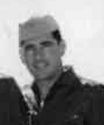
Captain RICHARD 'ZEKE' CORMIER USN., March 2001 - fighter ace and war hero who led the Blue Angels and helped guide the world-famous San Diego Aerospace Museum, has died at the age of 81. Richard Cormier served with UC-I aboard the U.S.S. Card in the Atlantic flying both the Wildcat and the Avenger, and was commended for an attack against a German U-boat. In March 1944 he was assigned to VF-80 flying the F6F Hellcat from the U.S.S. Ticonderoga during the campaign against the Philippine Islands, and in strikes against Iwo Jima and Okinawa. On 14 Dec. 44, over Luzon, "Zeke" shot down 4 japanese planes earning a silver star.With 8 victories to his credit during World War II, 'Zeke' Cormier flew in the Korean War and later as leader of the famous 'Blue Angels'. He retired from the Navy in 1964.
|

Vorse, Albert Ogden ,Camp Hill, Pa.
Vorse, Albert O. "Scoop"; Lt-LtCdr, USN
~~~ VF-2/VF-3, CO Red5 VF-6, CAG-80/Detach 10.5 kills: ~~~
Vorse was Commander of air group 80 on USS Ticonderoga when they began raids on the Phillipines. In VF-80's first aerial combat during a strike over Airfields in Manilla, P.I., Lt.Cmdr Vorse, flying an F6F-5 hellcat with his fighter squadron VF-80 shot down one Japanese "oscar" and damaged another. During the aerial combat 5 enemy aircraft were destroyed and at least 6 others damaged. VF-80 lost two planes in the combat. With the exception of Cmdr. Vorse and Cmdr. Leroy Keith (VF-80 commanding Officer) it was the first combat for the rest of the squadron who became known as "Vorse's Vipers" Vorse flew with several squadrons thru many campaigns in the pacific before becoming CO of air group 80. He finished his world war two flying career with 10 1/2 kills.
"Scoop" Vorse was one of the 'few' who were responsible for developing the tactics that later stood in good stead the whole of the US effort against the Japanese. Men such as Vorse, John Thatch and Butch O'Hare exerted far greater influence over their service than their rank indicated. Through their efforts and courage, along with those of , Bill Leonard, Wade McClusky and others, they showed how to fight the Japanese and win, at a time when others were losing.
Vorse was awarded numerous medals and awards for his service including the Navy Cross.
After departing air group 80, Vorse remained in the navy and retired as a Rear Admiral in January 1959
|

Lieutenant Commander Franz Kanaga, LT.CMDR. Kanaga took command of Ticonderoga's VB-87 on 5 January 1945. On July 24, 1945 with our air group 87, he led a squadron of dive bombers toward the Japanese battleship Hyuga in the inland Sea of Japan. Kanaga bombed the ship but his plane was heavily damaged by flak and he was forced to make an emergency landing after losing hydraulic fluid and radio contact.
|

Jim Vernon., Jim was a carrier pilot in our air group VBF-87 during the final months of the war. . He wrote a book which gives an up-close-and-personal account of life in a bomber-fighter squadron and the roller-coaster emotions involved in combat sorties over the hostile sea and land. As a member of VBF-87, Vernon offers a unique glimpse into the past at a time when as teenagers, they matured rapidly as they faced the realities of war, his love of flying, and the camaraderie of his flying mates, along with the factual details of battle that contribute important dimensions to the overall story of the air war.
|

Rear Admiral Irwin Chase, Jr., US Navy, Retired., a decorated veteran of World War II, died on Sunday, (June 3, 2001)
In 1944, he joined the fast aircraft carrier Ticonderoga as navigator, and saw action in the Western Pacific and China Sea with the Third Fleet, Admiral Halsey commanding, and Task Force 38, under Vice Admiral McCain. Having endured a typhoon in December, 1944, Ticonderoga was attacked and damaged by Japanese kamikaze planes near Formosa on 21 January, 1945. With both her captain and executive officer wounded, and heavy casualties to her crew, then Commander Chase lead successful fire fighting and damage control efforts and brought the carrier back to her base at Ulithi. Chase was awarded the Silver Star for this action.
|
Lt. John W. Padgett, a decorated naval aviator officer during WW II as senior flight deck officer aboard the USS Ticonderoga (CV-14)

Lieutenant Alexander Louis Anderson, Born in New Rochelle, New York on February 28, 1916, Alexander Anderson became a U.S. Naval ACE during World War II, and was credited with destroying 5.5 enemy aircraft in aerial combat .Lieutenant Alexander Louis Anderson of Millbrook, New York, flew with our air group 80 as a member of Bombing Fighting Squadron 80 (VBF-80) aboard USS Ticonderoga CV-14 and USS Hancock CV-19. He became an "Ace in a day" while leading a division of planes on a fighter sweep against enemy air power. He was awarded the NAVY CROSS for his actions |
Lieutenant Commander Paul Brehm, his war time decorations included the Navy Cross, the Distinguished Flying Cross, and the Air Medal with 6 stars. He is a member of The Legion of Valor and now lives in Riverside, California.
It was with Airgroup Eighty-Seven, that Lt Cmmdr. Brehm came to be aboard the USS Ticonderoga. With our airgroup 87, he flew the SB2C divebomber on the Hyuga and Tone missions
Click here for an interview with LC Brehm and stories of the Hyuga and Tone strike.

Joseph E. Cotey, Joseph E. Cotey, 82, of Lake Forest, passed away on April 9, 2006. Mr. Cotey was a World War II fighter pilot with VF-80 aboard USS Ticonderoga, and former owner of Cotey Office Environments. Loving husband of Mary Jane for 59 years;
On 21 January 1945, when the Big T was hit by two kamikazes Mr. Cotey was flying CAP(combat air patrol) when eight Japanese kamikaze appeared over the carrier, Mr. cotey was credited with shooting down three of them, and sharing a fourth with another pilot.
Other pilots of the group shot down two others, leaving two that crashed into the ship. As bad as the damage and loss of life was from those two, it may have been much worse if not for the heroic actions of Mr. Cotey and the rest of the groups courageous pilots and ships crew.
Mr. Cotey was the beloved father of Edward, William (Mary) and Richard (Carey) Cotey; adored grandfather of 12; cherished brother of June Falardeau.
|
Henry S. Austin, Jr., spent more than three years in the Navy as a pilot, serving on the aircraft carriers USS Hancock and USS Ticonderoga and receiving the Distinguished Flying Cross and two Air Medals.

Charles Downey, At 85, Chuck Downey isn't yet ready to slow down or sit around just passing time. A small airport nearby his home in Illinois, he still takes to the skies usually in one of several vintage airplanes, One he built himself and some with others. His current plans include building a WWII TBM avenger with friends. When not flying or building he keeps on the go at speaking engagements or spending time with family. For those of you who do not know Captain Downey's history, he entered Naval service in October 1942 and participated in carrier training on Lake Michigan aboard the Wolverine. He was the Youngest navy pilot of WWII. Six weeks younger than George Bush. He saw combat duty flying the SB2C in WWII with VB-80 aboard CV-14, the U.S.S. Ticonderoga. In 1944 Captain Downey was credited (along with another bomber aircraft) with sinking a Japanese light cruiser in the Phillippines, for which he was decorated with the Distinguished Flying Cross. Captain Downey also received the Air Medal for the destruction of an enemy hangar on a Tokyo airfield during the first carrier based aircraft attack on Japan (Doolittle's raid not counted due to the fact B-25s are not carrier based aircraft). Captain Downey went on to serve 33 years in Naval Aviation Service and in 1964 was promoted to the rank of Captain, making him the youngest such Officer at the time. Over his career in the Navy Captain Downey received a number of medals and citations during his service in WWII and beyond, thus distinguishing him as a true American Hero. |
Stuart Simmons, Simmons enlisted Sept. 2, 1941 as a Seaman 2/C AVN (Navy aviation). After training he received his commission as an ensign and naval aviator in July, 1942. After a tour with Scouting Squadron VS-58, Simmons returned to the States in April 1944, married, and then chose training as a fighter carrier and night fighter in the F6F Hellcat. He was then assigned as senior night fighter pilot to VF-8 Squadron 87 along with seven other VF navy pilots on the USS Ticonderoga, Simmons was given credit for shooting down three and one-half planes. Air Group 87 aboard the Ticonderoga was credited with sinking the battleship Hyuga, three merchant ships, 34 planes destroyed, and 61 combat strikes on many Islands and airfields. Simmons came back to the States in October, 1945
Conley Clark Laster, JR., After earning his wings, he was attached to a dive bomber squadron in Air Group 80, deployed on board the new carrier TICONDEROGA. During the Philippines Campaign, he was awarded a D.F.C. and an Air Medal. TICONDEROGA was hit by two kamikazes; Arky suffered 3rd degree burns on his arm and leg, and for this he was awarded the Purple Heart.

Edward L. Anderson, Captain Edward Lee Anderson of Claremont, Virginia enlisted in the Navy in 1932 and was accepted to the Naval Academy in 1934. In the bttle of Midway, he served as a Section Leader of a bombing squadron aboard the Enterprise and for his actions was awarded the Navy Cross.
;From January 1944 to January 1945 he served aboard the USS Ticonderoga.CV-14 He was the commanding officer of Bombing Squadron 80 and flew the SB2C. While serving on the USS Ticonderoga, he was severely injured in two Kamikaze attacks and received a Purple Heart as a result of these
After the war he served on USS Midway as Air Officer, and on the USS Forrestal as the Executive Officer until 1956. In 1958 he was given his first command of a surface ship the USS Onslow, which was a seaplane tender. On June 6, 1961 he was given command of the USS Franklin D. Roosevelt. On July 1, 1968 he retired from the Navy after a 32-year career. The video to the right is a tribute to this great naval aviator.
|
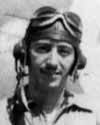
CAPT, LeRoy W. Keith USN, naval ace flew from carriers USS Savannah, USS Ticonderoga and USS Tarawa and was CO of VF-80. His decorations included the Navy Cross.
|
Thomas C. Newell VIRGINIA BEACH -- Thomas C. Newell, 76, died March 25, 2002. A native of Niagara Falls, N.Y., Mr. Newell was a retired commercial airlines pilot from Zantop International Airlines. He was a U.S. Naval veteran of World War II serving as a pilot aboard the aircraft carrier USS Ticonderoga. He was also a member of the A.O.P.A., Veterans of Foreign Wars Post No. 190, American Legion Post No. 110, D.A.V. Chapter 20, and was a Mason in Ann Arbor, Mich. Before joining Zantop Airlines, he was a pilot for Capitol and United Commercial Airlines. Mr. Newell is survived by his daughter, Nancy S. Morgan and husband, Paul, of Virginia Beach; two sons, William ``Billy'' Newell and Jon Scott Newell, both of Virginia Beach; a sister, Norma Barden of Paw Paw, Mich.; four grandchildren; a great-grandchild; and his former wife and friend, Marie Louise Newell.
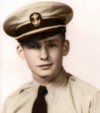
Robert L.Butcher, 1923-2009, PLEASANT PLAINS - Robert L. Butcher of Pleasant Plains passed away Aug. 2, 2009, in Phoenix.
He was born Aug. 15, 1923, in Wilkensburg, PA, the son of Charles A. and Lucia G. Butcher.
He was a pilot in the U.S. Navy during World War II, participating in the Pacific campaigns aboard the aircraft carrier, USS Ticonderoga, squadron VBF 87. His military career continued in the Naval Reserve as a lieutenant commander until 1959. Following completion of his war duty, Bob attended and graduated from Iowa State University.
Bob's long career included management of a branch office for Refco futures; owner of and grain dealer for H & B Specialties, a grain exporter; a commodity trader with Plains Commodities and a participant in the acquisition and growth of the Town and Country Bank, Springfield, IL. His love of flying continued throughout his life as he piloted various aircraft for government figures, executives and for his family. Surviving are his children, Robert W. Butcher, Richard Butcher, Diane Clemmons and Paul O'Berry; seven grandchildren; and four stepchildren and their children. Those who wish to remember Bob in a special way may make gifts in his memory to the Naval Aviation Museum Foundation in honor of Robert Butcher. All checks may be made payable to NAMF at 1750 Radford Blvd, Suite B, NAS Pensacola, FL 32508. |
LTC Robert O. Walker, 74, of 28 Meade St., Wellsboro, died Tuesday, Dec. 28, 1999, at Lewistown Hospital. Born Oct. 15, 1925, his wife, Rovena (Stepp) Walker, whom he married in July of 1950, survives He joined the U.S. Navy in July 1943, and was trained to be a radio operator-gunner in Navy Torpedo Squadron 87 aboard the U.S.S. Ticonderoga. He participated in the final campaign of World War II in the Pacific Theatre. In July 1945, he took part in the sinking of the Japanese battleship Hyuga at Kure Naval Base. He was discharged in April 1945. In 1951, he was commissioned as Second Lieutenant in Regular Army. His tours of duty included Korea, Vietnam, Okinawa, France, Germany. He was a deputy C2 of XXIV U.S. Army Corp in Vietnam from 1968-1969. He then became an Executive Officer of the U.S. Intelligence School for 1969 and 1970. He was Chief of Exploitation Branch Division in Fort Holabird, Md., and was on staff of the U.S. Army Europe until he retired June 1, 1972. He was awarded the following medals: Legion of Merit (Vietnam), Bronze Star (Vietnam), Air Medal (World War II and Vietnam), the Meritorious Achievement Award (Vietnam and Germany), Army Commendation Medal (Ft. Holabird), and numerous service medals for World War II and Vietnam.
^ back to top ^
If you would like a member from one of Ticonderoga's WWII Air Groups remembered here, send a brief description and photo if possible to:
cv14@cv14.com
|
 Visit our Virtual Cemetary for WWII veterans of USS Ticonderoga. Leave photos or virtual flowers with a note in appreciation of their service. Visit our Virtual Cemetary for WWII veterans of USS Ticonderoga. Leave photos or virtual flowers with a note in appreciation of their service. |
Some graphics may link to items for purchase from our partners and help support this site. It's a win win!
copyright CV14 - © 2002 CV14 - All rights reserved.
| 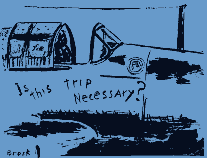 (from cv-14 war log book)
(from cv-14 war log book)
~- Air Group Sites -~ Just added VB-80
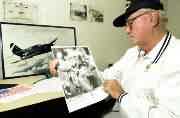
- Reunion 2000 -About 26 members of the U.S. Carrier Air Group 80 Dive Bomber Squadron VB-80 recall some memories
Our Naval Aces
| name | victories |
Airgroups | | Ackerman, Fred Forrest | 4.5 | VF-80 |
| Anderson, Alexander Louis | 5.5 | VF-80,
VBF- |
| Anderson, Robert Harold | 8.5 | VF-50,
VF-80 |
| Beaudry, Paul Hector Norman | 5 | VF-80,
VBF-80 |
| Cormier, Richard Lee | 8 | VF-80,
VBF-80 |
| Edwards William Clarence Jr. | 7.5 | VF-80 |
| Fair, John Warren | 5 | VF-80 |
| Fleming, Patrick Dawson | 19 | VF-80,
VBF-80 |
| Hamblin, Loius Roberts | 6.5 | VF-80 |
| Keith, LeRoy William James | 5 | VF-80 | | /Parrish, Elbert Willard |
6 | VF-80,
VBF-80 | | Vorse, Albert Ogden | 10.5 | VF-80
VF-2
VF-3
VF-6 | |
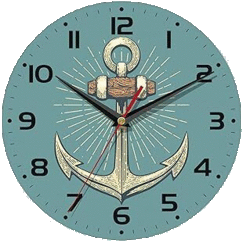 |
Navy Flyer?s Creed
I am a United States Navy Flyer.
My countrymen built the best airplane
in the world and entrusted it to me.
They trained me to fly it.
I will use it to the absolute limit of my power.
With my fellow pilots, air crew, and deck crews, my plane and I will do anything necessary to carry out our tremendous responsibilities.
I will always remember we are part of an unbeatable combat team --
the United States Navy.
When the going is fast and rough,
I will not falter.
I will be uncompromising
in every blow I strike.
I will be humbled in victory.
I am a United States Navy flyer.
I have dedicated myself to my country, with its many millions of all races, colors, and creeds.
They and their way of life are worthy
of my greatest protective effort.
I ask the help of God in making
that effort great enough. |
VIRGINIA HONORS AVIATOR
CAPT. EDWARD L. ANDERSON, CO of VBF-80

Get some great looking aircraft art |
|



